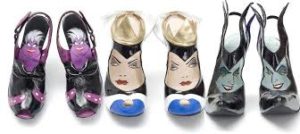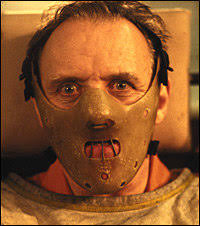The world loves a villain. Why? Maybe it’s their dark charisma and freedom to do whatever they want, or perhaps we just love to hate them, reading on in anticipation of their downfall. A truly exceptional villain incites a visceral response, compelling us to emote, whatever that emotion may be. But ask yourself, how often do you put yourself in the role of the antagonist?

Narratives are rarely black and white – many of the most intriguing books out there focus on the grey area in between – but I don’t mean the antihero or the morally ambiguous MC; we’re talking true villains here. Too often we see the antagonist as a tool for exploring the protagonist, a two-dimensional character for the hero/heroine to overcome. If we’re to create a villain that sticks in people’s minds, they have to have depth and complexity, and the best way to do that is to put yourself in their shoes.
As a writer, it would be easy to say we know our antagonists, being as they come from our imagination and, essentially, a part of our own psyche. But delve deeper; ask yourself if you truly understand them. What motivates them, drives them to commit the wicked things they do?
When we examine the face of history, it seems simple to determine the sides of good and evil, just as when we replay our own lives, we rarely cast ourselves as the ‘bad guy’. You may be able to admit a mistake or error in judgement, but do you ever see yourself as the villain? I’ll warrant not. Guess what? Neither does anyone else.
Take the Holocaust as an example; whenever we read about it or watch a programme or movie, it’s affirming to think we’d have stepped in and done something, tried to protect the Jews from the horror of the ghetto and then the camps. The reality is, we probably wouldn’t, and I say that as someone of Jewish descent. Of course, that doesn’t mean you’d have signed on as an SS Officer, but in all likelihood, you’d have accepted the status quo, perhaps convinced by the Nazi rhetoric. Now you’re the villain.
There are a hundred reasons good people and good communities commit heinous acts, often some variant of the blame game. Essentially, someone or something has persuaded them it’s right. If you can’t see how easy it is to become the villain, you only need to look at politics in Europe and the US over the last few years. Whichever side of the fence you sit, you must acknowledge the other side might view you as the enemy.
So, how does this help us write villains? Start by realising your villain doesn’t see themselves that way. Although we meet them at a particular point in time, they didn’t evolve in isolation – they have a past, with experiences that have shaped them; a product of their environment. You may or may not explain all aspects of this to your reader, but knowing it will flesh them out as a believable character. It won’t make them a better person or forgive them their trespasses, however, it does make them real.
Even the worst villains can have redeeming qualities, or traits which make you view them in a different light, perhaps like them, fleeting though it may be. The vital element is that well-developed villains – the ones in which we see a sliver of ourselves as we could be – have impact.

Patrick Bateman (American Psycho by Bret Easton Ellis): A combination of the worst society has to offer; a hugely successful man with truly reprehensible character traits: sociopathic, homophobic, racist, misogynistic, not to mention a murderer and a sadist, if his account is to be believed, of course. Yet, despite all this, he’s wretched and pitiful, a result of consumerism gone insane, trapped in a superficial world many would aspire to, if only from the outside looking in.
Victor Vale (Vicious by V.E. Schwab): A morally bereft character, but one who follows his logic to make decisions. He’s a completely believable, albeit psychopathic, individual whose actions and motivations are well understood: betrayal and internment, amongst others. With a host of unpleasant characters, ambiguity is the name of the game in this book, making it difficult to determine who the true villain is. Everyone has their reasons.
Cersei Lannister (A Song of Ice and Fire by George R. R. Martin): Ruthless, vicious, and determined to win no matter the cost. It’s likely Cersei was horrible from childhood (knowing how she treated Tyrion and those beneath her), but the question remains whether she’d have been quite so awful if not for her marriage to Robert Baratheon. Her one redeeming quality is that she loves her children, and her cruelty (and perhaps her desperation) increases as they die one by one.
Frankenstein’s monster (Frankenstein by Mary Shelley): A creature stitched together from pieces of dead matter – a genuine monster in fictional terms and an obvious villain. Perhaps too obvious, and the true evil lies elsewhere. Victor Frankenstein created him, a product of ambition over morality, and never even gave him a name. Shunned and feared for his appearance, denied the most basic human needs, the creature becomes the incarnation of his poor treatment.
Sand dan Glokta (First Law Trilogy by Joe Abercrombie): A tortured torturer and a man you come to love and hate. Glokta carries out horrific acts, seemingly unaffected by them, but his background and situation leave him with little choice. As a cripple, he has few options and so puts his keen intelligence and vast knowledge of torture to good use. Not for pleasure – he’s not a sadist – but as a means to achieve his goals, Glokta makes no apologies for what he does. He’s in a living hell anyway – why would he? (Thanks to Phil Parker @PhilSpeculates for his input on this entry.)
Elim Garak (Deep Space 9): Sometimes the best villains aren’t villains all the time, but they’ll step into that role when necessity demands and not lose much sleep over it. Garak openly flaunts his duplicitous and cunning nature, taking pride in his abilities and valuing similar traits in others. This is the life he was raised in, a poster child for nurture over nature. He’s not without sentiment or loyalty, despite his protestations, but still finds it unsettling when people start to like and trust him. (Okay, so this example isn’t from a book, but I think he’s an amazing character.)

Hannibal Lecter (Silence of the Lambs by Thomas Harris): Described as a “pure sociopath”, Lecter is a cold-blooded killer in every respect – this is never in question. But he is also intelligent, refined, and articulate, valuing manners and decorum. Although quietly terrifying, he is also likeable, and gives the reader the sense he probably wouldn’t eat you if you treated him with respect. This is Clarice’s experience, and if not redeemed by his affection for her, Lecter is humanised by it. Red Dragon and Silence of the Lambs don’t tell us much about why he is the way he is, although later books, somewhat unsatisfyingly, explain his childhood and the role his sister played in his evolution.
The overt character traits of your villain may not matter so much in certain circumstances, i.e. if the antagonist is a malevolent presence (think Sauron in Lord of the Rings) or the setting itself is the enemy. Big Brother in 1984 is the master of all, although there’s no indication it’s a real person, rather a personification of the Party. That doesn’t mean other characters, Mr O’Brien in particular, don’t attract a fair share of the reader’s hatred, but they’ve learned there is no escape. In this world, you’re either a perpetrator or a victim. It’s worth noting that, despite Big Brother having no strict persona, the oppressive nature of this totalitarian being is built into the story from start to finish, and is no less complex or frighteningly believable.
Our last stop on the villain tour is the ‘just because’ villain. At least on the surface, this villain lacks the intricacies displayed by others, favouring chaos and sating a thirst for violence. Think the Joker from The Dark Knight or Kefka Palazzo from Final Fantasy (thanks to Omar @ohmz for pointing out this dude).
Nobody could claim the Joker isn’t an iconic villain, and while there have been multiple origin stories, the character’s unreliable narrative leaves the truth in question. His reasons for murder and mayhem are best known to himself; as Alfred once said, “Some men just want to watch the world burn.” Now, this might seem like it’s in contrast to the theme of this article, but leaving aside the fact that Joker is considered a ‘supervillain’, he sees himself as Batman’s antithesis, necessary to bring his nemesis to his full potential. Providing balance could be viewed by the perpetrator as a righteous act.
Influenced by experience, goals and aspirations drive characters, shaping their decision-making, and creating the potential for conflict within themselves and with other people. Few individuals see themselves as the villain, and fewer still set out to be that way. Maybe they had a choice, maybe they didn’t, but on their journey to the dark side, your villain will have made excuses, justifications, and arguments for their actions. That’s what people do to avoid being cast as the bad guy.
Keep all this in mind when you’re crafting your antagonist; put yourself in their position, cognisant that they are more than a wall to break your protagonist against. Highlight their strengths, not just their flaws. Tell their life story – love them a little – and what you’ll end up with is a villain who jumps off the page and into the mind. Be the villain, if only for a little while.
You may be the villain in someone else’s story and not even know it.
Want to check out some of the most famous villains in literature? Click here.
If you enjoyed this article, you might want to read my thoughts on writing a trilogy. Click here.
Definitely! I love a complex villain!